Meeting Ergonomic Handling In Boutique Production Plants Requirements in Italy with Automated Pallet Exchange
In my years in the packaging industry, I've seen a common problem plague even the most successful plants. You have a highly skilled team and a premium product, but a hidden bottleneck is draining your resources. This bottleneck is manual pallet handling. It seems simple, but it leads to worker strain, potential product damage, and process slowdowns. I've watched countless companies in Italy, known for their boutique, high-quality production, struggle with this. They worry that an injury to a key team member or damage to a high-value shipment could cripple their operations. It’s a constant source of stress that undermines the very quality and craftsmanship they are known for. The good news is, there is a clear and effective solution. Automated pallet exchange systems are specifically designed to solve this problem, enhancing ergonomic handling and seamlessly integrating into the sophisticated environment of boutique manufacturing.
Automated pallet exchange systems are the definitive solution for meeting ergonomic handling requirements in Italian boutique production plants. These machines automate the strenuous task of transferring goods from one pallet to another, effectively eliminating the manual lifting, bending, and twisting that lead to worker injuries. By mechanizing this process, they not only create a safer work environment compliant with strict European standards but also protect high-value products from damage, ensuring both worker well-being and operational excellence.
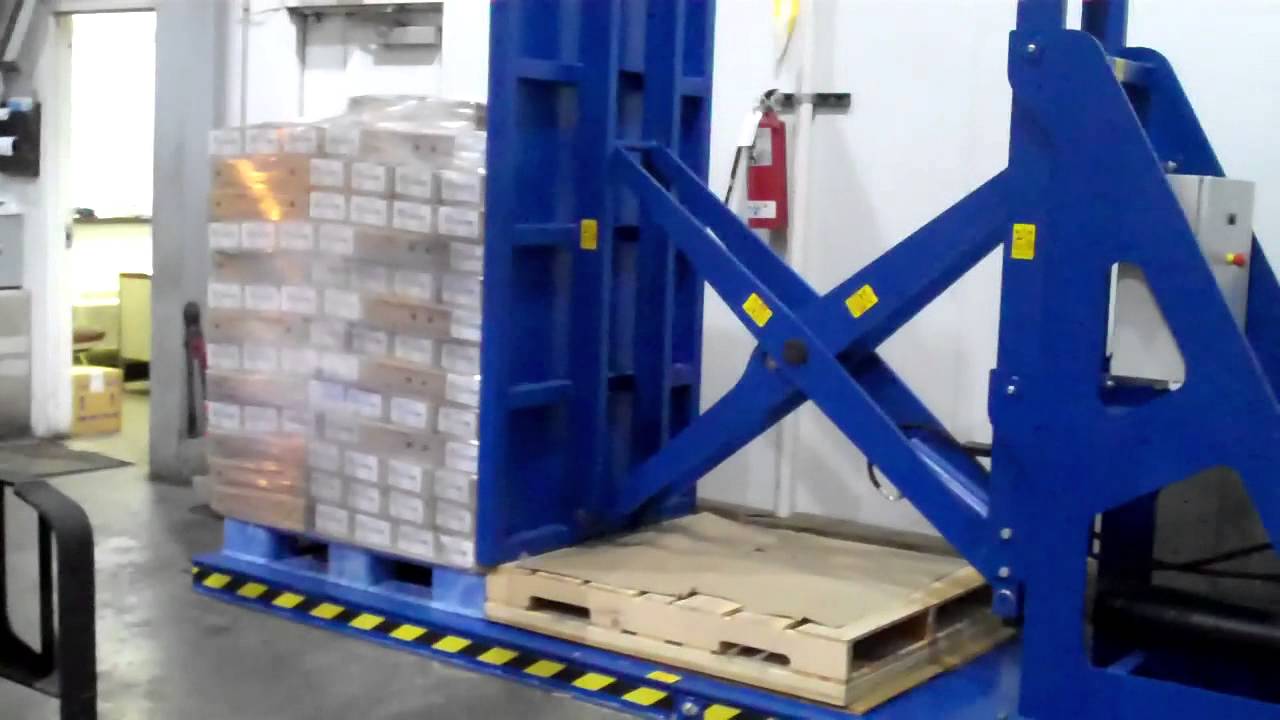
This technology is more than just a piece of hardware. It represents a strategic shift in how you manage your internal logistics. It's about protecting your most valuable assets: your people and your products. But I know from experience that adopting new equipment can seem complex. You likely have questions about how it works, why it’s a fit for your specific operation, and what it takes to integrate it properly. Let's walk through those questions together, and I'll share what I've learned from helping businesses just like yours make this transition smoothly and successfully.
How does an automated pallet exchanger directly improve worker ergonomics?
Every plant manager knows the hidden costs of manual labor. A worker calls in sick with a backache, and suddenly your line slows down. You see your team straining to lift heavy loads, and you worry about the long-term impact on their health and the risk of a serious injury. These aren't just HR issues; they are operational risks that threaten your productivity and bottom line. What if you could design that risk right out of your process?
An automated pallet exchanger directly improves worker ergonomics by taking over the entire physical burden of transferring goods between pallets. The machine uses a safe, mechanical process—like clamping and inverting or gently pushing the load—to move products without any human lifting. This single change eliminates the primary causes of musculoskeletal disorders (MSDs) in logistics, such as sprains and strains, creating a fundamentally safer workplace.
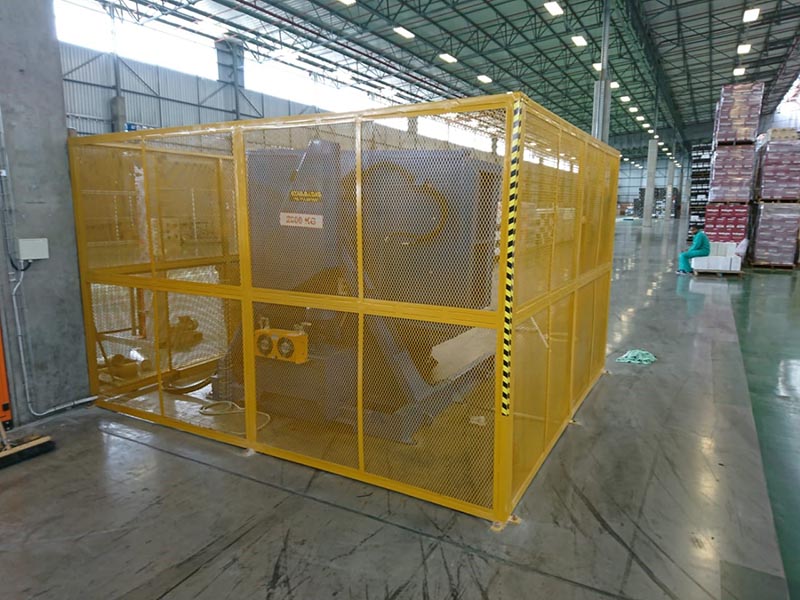
Dive Deeper: The Mechanics of a Safer Workplace
Let's break down the specific ergonomic benefits. When I started as an engineer, we often focused only on the machine's speed. But over the years, working with clients who truly value their employees, I learned that the human factor is just as important. The real value of automation in handling is how it transforms the work itself.
Eliminating Dangerous Movements
Manual pallet exchange is a textbook example of poor ergonomics. It forces workers into a series of harmful actions. Think about it: bending at the waist to lift heavy boxes, twisting the torso to move them, and reaching awkwardly to place them on a new pallet. These actions, repeated dozens of times a day, place immense stress on the spine, shoulders, and knees.
An automated system operates on a completely different principle. It uses smooth, controlled, and predictable mechanical movements. The load is secured, moved, and released without any jarring or instability.
| Manual Handling Action | Ergonomic Risk | Automated Solution |
|---|---|---|
| Bending and Lifting | High risk of lower back injury (lumbar strain) | Machine lifts the entire load at once. |
| Twisting Torso | Risk of spinal disc and muscle damage | Machine rotates or pushes on a fixed axis. |
| Repetitive Reaching | Shoulder and upper back strain | No manual reaching required. |
| Unstable Load Handling | Risk of dropped products, crushed feet/hands | Load is securely clamped and contained. |
Creating a Psychologically Secure Environment
The benefits are not just physical. When workers are no longer forced to perform physically punishing tasks, their entire focus can shift. I remember visiting a client's food processing plant in the past. Their team was constantly worried about dropping fragile goods or hurting their backs. Morale was low. After we installed a pallet inverter, the change was incredible. The team wasn't just safer; they were more engaged. They could now focus their energy on what truly matters in a boutique operation: checking product quality, ensuring proper labeling, and optimizing the workflow. They became process supervisors, not manual laborers. This shift empowers your workforce, increases job satisfaction, and reduces the mental stress associated with hazardous work. A safe worker is a focused and productive worker.
Why are boutique production plants in Italy ideal candidates for this technology?
You run a specialized plant in Italy. Your brand is built on a promise of excellence, whether you're producing fine wines, luxury leather goods, or precision-engineered components. Your customers don't just buy a product; they buy a story of quality and craftsmanship. But this high-value reputation is fragile. A single damaged shipment or a failure to meet a compliance standard can tarnish your brand. How do you ensure your internal logistics live up to the premium quality of your products?
Boutique production plants in Italy are ideal candidates for automated pallet exchange because the technology directly addresses their core priorities. These plants handle high-value, often fragile goods where preventing damage is critical. They also depend on a highly skilled, often artisan, workforce whose well-being is essential to maintaining quality. Automation provides the gentle, consistent handling needed to protect products and the ergonomic safety required to protect people, perfectly aligning with the "Made in Italy" ethos of precision and excellence.
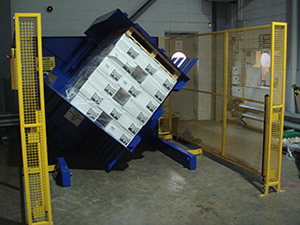
Dive Deeper: Aligning Automation with the "Made in Italy" Brand
The term "boutique" implies a focus on quality over quantity. This philosophy must extend to every part of the operation. From my experience helping these types of companies, I've found that automation, when applied correctly, is a powerful tool for reinforcing a premium brand identity.
Protecting the Priceless: High-Value Goods
Many Italian boutique industries deal with products that are delicate, perishable, or extremely valuable. Consider a pallet of artisanal cheese, designer glass, or sensitive pharmaceutical vials. During a manual transfer, one slip or a moment of fatigue can lead to a catastrophic loss. The cost is not just the value of the goods, but the lost production time and the potential damage to your reputation with the client.
Automated pallet exchangers are engineered for gentle handling. They use precise pressure controls and smooth motions to transfer loads without shock or vibration. This consistency is something even the most careful human worker cannot guarantee over an eight-hour shift. It's an insurance policy for your products.
The Modern Face of Craftsmanship
The "Made in Italy" label carries immense weight. It suggests a history of tradition and skill. Today, it also implies modern manufacturing excellence. When a potential high-stakes client or an auditor visits your facility, what do they see? A clean, modern, and safe operation with automated systems shows a commitment to cutting-edge processes. It demonstrates that your dedication to quality is holistic, running from raw materials to final shipment. It reinforces your brand as a leader, not a follower.
| Boutique Plant Characteristic | Challenge Without Automation | How Pallet Exchange Helps |
|---|---|---|
| High Product Value | High financial risk from damage during manual handling. | Gentle, controlled transfer minimizes product damage. |
| Skilled, Artisan Workforce | Risk of injury to key personnel, leading to downtime. | Protects workers, allowing them to focus on quality tasks. |
| Brand Reputation | Old-fashioned, unsafe processes can harm brand image. | Modern automation showcases a commitment to excellence. |
| Flexible Production Runs | Manual processes are inefficient for frequent changeovers. | Programmable systems easily adapt to different products. |
This alignment makes the investment in automation not just a cost-saving measure, but a brand-enhancing strategy. It’s about building a factory that is as well-crafted as the products it creates.
What are the key considerations when integrating a pallet exchange system into an existing line?
So, you see the benefits. An automated pallet exchanger can protect your people and your products. But now comes the practical question: how do I get this machine into my factory without causing chaos? The thought of stopping production, re-arranging layouts, and training staff on new equipment can feel overwhelming. I've guided many clients through this process, and I can tell you that a successful integration is all about careful planning.
The key considerations when integrating a pallet exchange system are a thorough analysis of your physical space and workflow, a clear understanding of your product and pallet specifications, and a strict adherence to safety and compliance standards. Getting these three areas right before you purchase any equipment is the secret to a smooth, efficient, and successful installation.
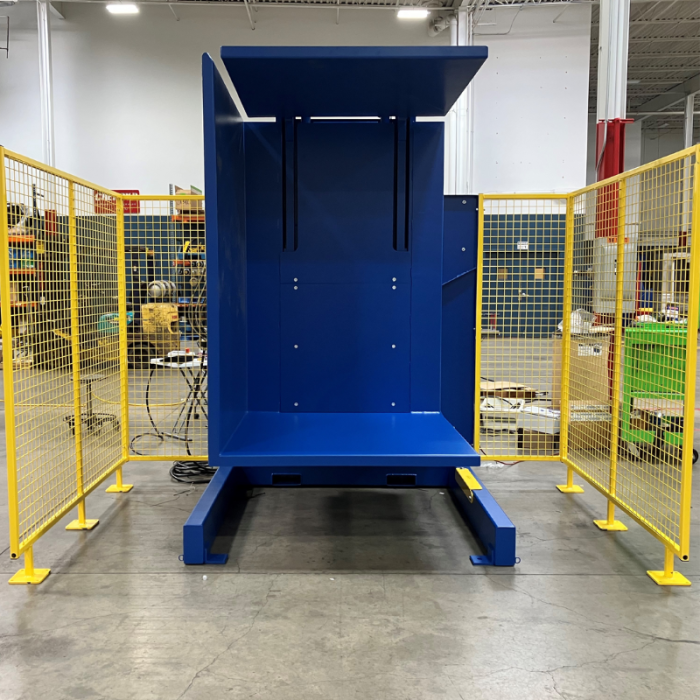
Dive Deeper: A Blueprint for Seamless Integration
A good supplier doesn't just sell you a machine. They act as a partner to ensure it works perfectly within your unique environment. At SHJLPACK, we treat this planning phase as the most critical part of any project. Here’s what we look at.
Space, Layout, and Workflow Analysis
You cannot simply choose a machine from a catalog and hope it fits. The first step is always a detailed site assessment. We need to map out your current process. Where do incoming pallets arrive? Where do they need to go? How do forklifts and personnel move through the area? We look at everything:
- Footprint: Do you have space for a standalone unit where a forklift can load and unload, or do you need an in-line system that connects directly to conveyors?
- Height: We measure ceiling heights to ensure clearance, especially for pallet inverters that tilt a full 180 degrees.
- Flow: The goal is to place the machine in a location that minimizes travel distance and avoids creating new bottlenecks. It should feel like a natural part of your production line.
Product and Pallet Specifications: The Devil is in the Details
This is where many projects go wrong. A machine that works perfectly for stable, boxed goods might crush a pallet of delicate items. As your partner, we need to ask detailed questions before we can recommend a solution.
| Key Question | Why It Matters | Example |
|---|---|---|
| What is the product? | Determines the handling method (inversion vs. pushing). | Sacks of flour can be inverted; fragile glass bottles need a gentle push-transfer. |
| What is the load weight? | Ensures the machine has the required capacity. | A 1500 kg load needs a heavy-duty machine. |
| How stable is the load? | Affects clamping pressure and transfer speed. | A neatly stacked pallet of boxes is stable; a pallet of small drums may shift. |
| What pallet types are used? | Determines compatibility (e.g., from wood to plastic). | Switching to hygienic plastic pallets for food export is a common reason for exchange. |
Answering these questions ensures you get a machine that is perfectly tailored to your needs, not a one-size-fits-all solution that causes problems down the line.
Safety and Compliance: A Non-Negotiable Priority
In Italy and across Europe, safety is paramount. Any new machine must be CE marked and comply with rigorous safety directives. This is not an area for compromise. A proper integration includes a complete safety system, typically involving light curtains that stop the machine if someone enters the area, physical safety caging, and clearly marked emergency stop buttons. A comprehensive risk assessment should be performed to identify and mitigate any potential hazards. This protects your team and ensures you are fully compliant with all local regulations.
How can automation support both efficiency and the high-quality standards of boutique brands?
There's a common misconception I hear from owners of high-end businesses. They fear that "automation" is a word for mass production, that it will strip away the human touch and craftsmanship that defines their brand. They believe they have to choose between efficiency and quality. I'm here to tell you that this is a false choice. What if automation was the very tool that could elevate your quality to a new level of consistency?
Automation supports both efficiency and high quality by replacing human inconsistency with machine precision. It eliminates handling errors that cause product damage, streamlines the workflow to increase throughput, and frees your skilled employees from manual labor so they can dedicate their full attention to value-added tasks like quality control and process improvement. The result is a more efficient line that produces a more consistent, higher-quality product.
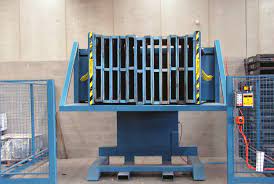
Dive Deeper: Efficiency as a Component of Quality
For a boutique brand, quality is the foundation of everything. But quality is not just about the final product; it's about the integrity of the entire process. Here’s how automation reinforces that integrity.
From Human Variability to Machine Consistency
Let's be honest. Even your best employee has good days and bad days. The first pallet they transfer in a shift will be handled differently than the last. A moment of distraction or fatigue can lead to a slight mishandling, which for a sensitive product, can be the difference between perfect and scrap. A machine does not get tired. It does not get distracted. It performs the transfer with the exact same speed, pressure, and motion every single time. This repeatability is the very definition of process control. By automating the handling, you are removing a major source of variability and making your quality standards more robust and reliable.
Data: The New Language of Quality Control
Modern automation systems do more than just move things. They generate data. Every cycle of a pallet exchanger can be logged and tracked. This information can be fed directly into your Manufacturing Execution System (MES).
- Traceability: You have a complete, time-stamped record of when every pallet was handled. This is invaluable for audits, especially in regulated industries like food, beverage, and pharmaceuticals.
- Performance Monitoring: You can track throughput in real-time. Is the packaging area keeping up with production? The data will tell you.
- Predictive Maintenance: The system can monitor its own performance, alerting you to potential issues before they cause a breakdown. This proactive approach to maintenance is key to maximizing uptime and efficiency.
Empowering People by Automating Tasks
This is the point I am most passionate about. I built my own factory from the ground up, and I learned that your people are your greatest asset. Good automation doesn't replace them; it unleashes their potential. When you take away the dull, dirty, and dangerous task of manual pallet handling, what are you left with? You're left with a skilled technician who now has the time and energy to do what humans do best: think, observe, and improve. They can spend their shift inspecting products for subtle defects, suggesting ways to optimize the line, and ensuring every single item that leaves your factory meets the high standards your customers expect. You are not automating a person; you are automating a task, and in doing so, you are making your team more valuable than ever before.
My Insight
When I first started as an engineer in a packing machine factory, I saw automation in very simple terms. It was a tool for big, high-volume plants to reduce their headcount and cut costs. That was the prevailing wisdom. But as I built my own business, SHJLPACK, and started working closely with a wide range of clients, from massive steel mills to specialized boutique manufacturers, my perspective changed completely.
I realized that for a forward-thinking leader like Javier Morales, or for the owner of a premium brand in Italy, automation is not about cutting costs. It’s about building value. It's about risk management and brand protection. You wouldn't ask a master watchmaker to spend his day moving heavy crates of metal. You would give him the best tools and the best environment so he can focus on his craft. The same principle applies here. Why would you ask your most skilled production team—the people who ensure your quality—to perform back-breaking manual labor that puts them and your products at risk?
The real return on investment from a system like an automated pallet exchanger isn't found by simply calculating the labor cost of one employee. The true ROI comes from preventing one catastrophic product recall. It comes from avoiding a key team member's career-ending injury. It comes from the confidence you gain when a major client tours your facility and sees a clean, modern, and safe operation that reflects the quality of your brand.
This is the philosophy behind our slogan, "TOTAL SOLUTION FOR WRAPPING MACHINE." It means looking beyond the machine itself and understanding its role in your larger strategy. It's about being a partner who helps you protect your people, perfect your process, and grow your business. My own journey from a factory employee to a business owner was possible because of this industry, and my goal now is to share what I've learned to help others succeed on their own terms.
Conclusion
Automated pallet exchange is a strategic investment for Italian boutique plants, boosting ergonomics, protecting product quality, and driving the modern efficiency that high-end brands demand.



